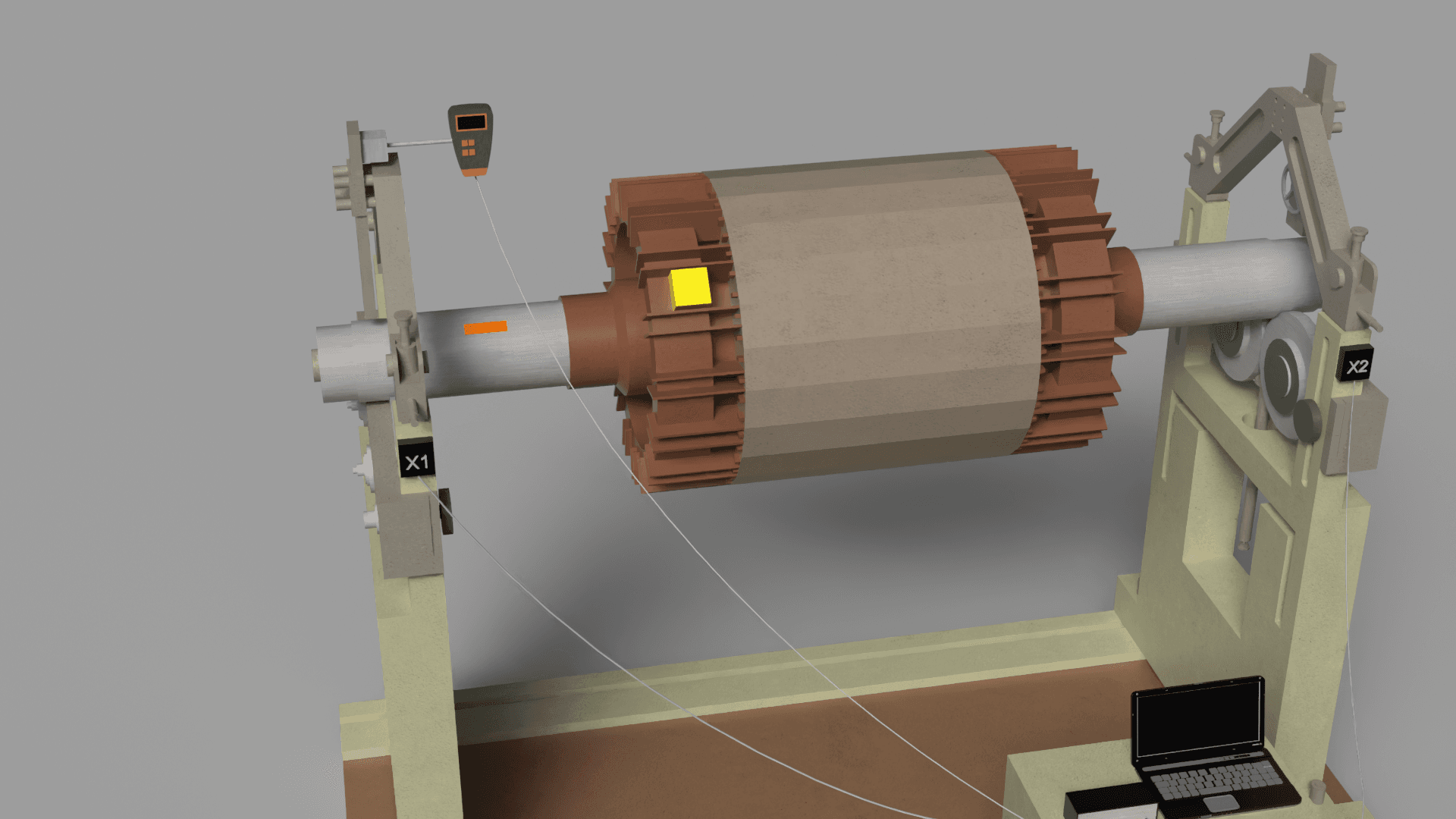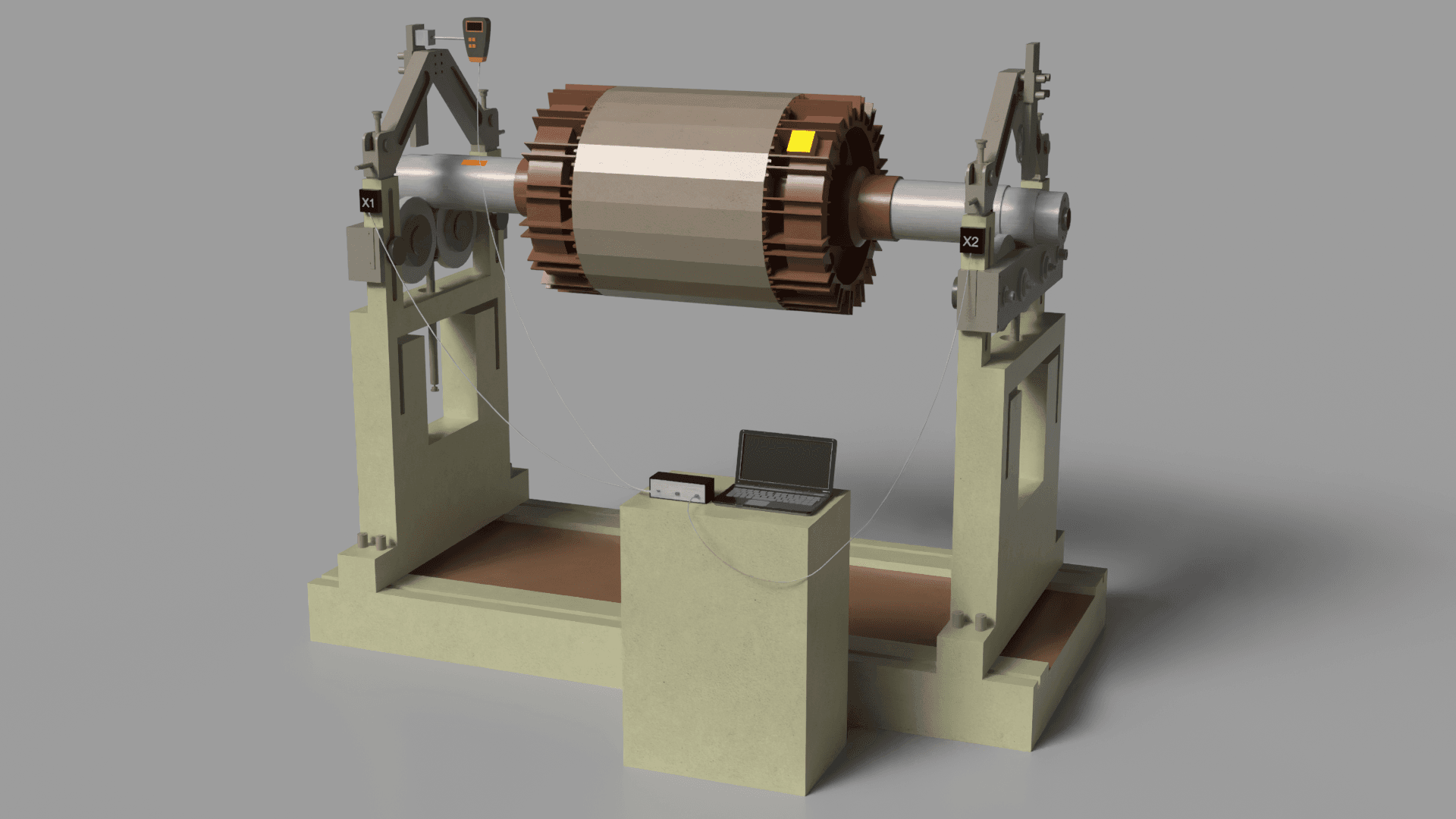Using the Balanset-1A Instrument
Equipment Preparation
- accelerometers, laser rpm sensor, mounting stand, software application, and additional tools.
- Connect the device to your PC using the USB interface and confirm the software installation.
Sensor Installation
- Fix the accelerometers securely to the machine’s structure in locations where vibrations are most prominent, ideally near the bearings.
- Aim the optical rpm sensor at the rotating shaft and apply a reflective strip to the shaft for phase angle data acquisition.
Launching the Software
- Launch the Balanset software on your computer.
- Select the appropriate balancing mode: single-plane or two-plane, depending on the rotor type and your specific requirements.
- Bring the rotor to its normal operating rotational frequency.
- The application will acquire data on vibration magnitude, rotational velocity, and phase angle to determine the initial imbalance state.
Attaching the Trial Weight
- Halt the rotation and mount a test weight at a designated position on the rotor, with the weight’s value entered into the software (usually in grams).
- Run the rotor again, allowing the software to measure the effects of the trial weight on vibration and phase.
Computing the Compensating Weight
- Using the acquired measurements, the program automatically determines the required corrective weight’s mass and angular position.
- The results of the calculation are shown both numerically and visually through charts and graphs.
Attaching the Corrective Mass
- Mount the calculated corrective weight onto the rotor at the specified location and angle.
- Periodic checks can be performed to ensure the balancing procedure is effectively reducing the vibration.
Final Check and Balance Confirmation
- Once the corrective weight is in place, restart the rotor and measure the remaining vibration amplitude.
- The balancing procedure is finished if the remaining vibration is within the permissible limits specified in ISO 1940.
- Should the vibration still be excessive, repeat the balancing steps, making further adjustments to the corrective weight as needed.
Report Generation
- The balancing results are saved in the software’s archive. You can create and print a report containing vibration data, correction weight mass, and its installation angle.
Final Recommendations
- Verify the secure attachment of all balancing weights and measurement sensors.
- Confirm that the rotor spins freely and quietly, without any unusual sounds or vibrations.
- In cases where the rotor is integrated into a more complex system, ensure the correct operation and interaction of all related components.
Instagram: https://www.instagram.com/vibromera_ou/
Youtube : https://youtu.be/guA6XJ-ArZM?si=vmkuX7RILzKBl0zL
Our website about Active vibration isolation systems
Machinio: https://www.machinio.com/listings/98380186-portable-balancer-vibration-analyzer-balanset-1a-full-kit-in-portugal
Facebook: https://www.facebook.com/marketplace/item/350151228150722
https://privatebookmark.com/story16950510/vibromera-leading-in-balancing-and-vibration-analysis






 Ler Hock Chuan
Ler Hock Chuan